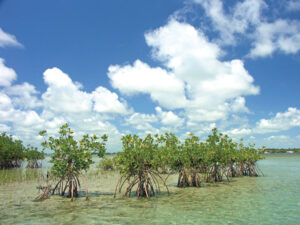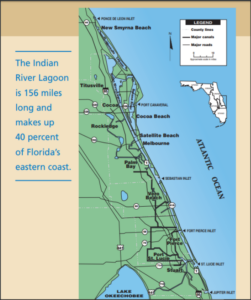Lagoon Facts

Biodiversity
Recognized as one of the most biologically diverse estuaries in the world, with a warm-temperate climate to the north and a subtropical climate to the south, the IRL is influenced by both which contributes to the spectacular biodiversity found within the Lagoon.
A number of distinct habitats serve as home to the plants and animals of the IRL. Seagrass meadows, mangrove forests, and saltmarshes are essential for a healthy Lagoon.


Sources: Indian River Lagoon National Estuary Program; Florida Department of Environmental Protection
The Indian River Lagoon stretches 156 miles from Ponce De Leon Inlet in New Smyrna Beach in the north, to Jupiter Inlet near West Palm Beach to the south.
The Indian River Lagoon system includes Mosquito Lagoon, Banana River Lagoon and Indian River.
This is a unique and diverse system that connects Volusia, Brevard, Indian River, St. Lucie and Martin counties.
A large portion of the IRL system, 71% of its area and nearly half its length, is within Brevard County.
The Indian River Lagoon (IRL) watershed's land features date back to 420,000 years ago, shaped by the rise and fall of the sea.

QUICK FACTS about the IRL:
• North America's most diverse estuary
• 2000+ Plant species
• 700+ Fish species
• 300+ Bird species
• 50+ threatened or endangered species
Source: Florida Department of Environmental Protection




